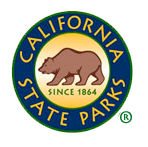Suggested Activities in Support of the State Plan
- Promote the preservation of resources for more than interpretive purposes by educating organizations and agencies about other types of uses that might better serve a community’s needs.
- Get involved as early as possible to work with community groups to identify options for adaptive re-use of a resource.
- Provide more information about how adaptive re-use is allowed for under the Secretary of the Interior’s Standards for the Treatment of Historic Properties.
- Create a citizen’s guide to historic preservation in your community.
- Reach out to the professional planning community, including the American Planning Association, to provide training materials on integrating historic preservation into land use planning processes and programs.
- Submit comments on pending economic development plans to ensure inclusion of preservation in plan strategies.
- Research other states’ outreach to the education community to find models to use in California; e.g., Colorado’s HistoriCorps program.
- Work to have historic preservation integrated into the K-12 history curriculum where appropriate.
- Train local government historic preservation commissioners, planning staff, and officials in historic preservation goals and practices.
- Develop technical assistance that provides guidelines for identifying and evaluating cultural landscapes in your community as a means of helping decision makers see the bigger picture when assessing project impacts.
- Teach public agencies that consultation is a relationship, not just a process, and should be ongoing and regular, rather than project-specific.
- Identify new and innovative funding sources to support cultural heritage initiatives.
- Support the effort to strengthen LEED points for preserving historic buildings.
Advocate for amending the California Environmental Quality Act (CEQA) to mandate cultural resources protection whenever possible and refine the categorical exemptions to prevent inadvertent site destruction.
- Help your local government achieve Certified Local Government status, address cultural resources in general plan updates, and adopt comprehensive cultural resource ordinances and processes for CEQA compliance.
- Support the development of contexts to assist in conducting surveys and preparing individual nominations (e.g., contexts associated with groups of people such as women’s history or specific cultural groups; contexts focused on California industries such as agriculture or mining; or contexts associated with a type of development such as post-World War II housing or military installations).
- Conduct surveys that focus on resource types that haven’t been adequately identified and evaluated in the past.
- Celebrate and provide examples of successful “outside the norm” nominations and adaptive re-use projects that can serve as models for others.
- Have a preservation presence at regional conferences of advocacy and professional organizations of potential partners including environmental advocacy organizations, local and regional planning agencies, and economic development and travel/tourism conferences and meetings.
- Invite representatives of these organizations and agencies to attend and speak at preservation functions and forums.
- Create forums where traditional and non-traditional preservation partners can share information and discuss questions, problems, issues and best practices.
- Hold a workshop devoted to landscapes issues and invite land managing agencies and organizations to participate.
- Create training programs aimed specifically at non-traditional partners and/or the general public—ensure the programs are understandable and speak to the issues important to their intended audience.
